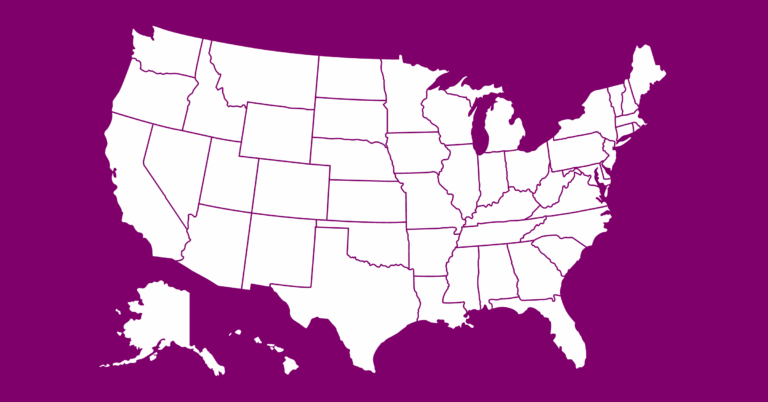Education leaders can be effective stewards of federal funds to create sustainable shifts to more equitable learning environments. Here’s how.
Download a PDF version of this page.
In a moment where the unprecedented has become the norm, the federal government has provided the nation’s schools with a critical infusion of resources, including the Elementary and Secondary School Emergency Relief (ESSER) fund and the Governors Emergency Education Relief (GEER) fund. These federal funds aim to help America’s schools recover from the COVID-19 pandemic. With care and foresight, this investment can help transform learning communities across the nation into resilient and equitable education systems that provide each student with a personalized pathway to success.
This is an historic opportunity not just to recover from the pandemic, but to address inequitable education outcomes by moving away from systems that sort students toward systems that see and develop the brilliance of each child. These funds also provide a unique opportunity for districts to prepare for future uncertainties that might cause further disruption to education and think critically about how to create more equitable opportunities for learning in the future.
There is a strong desire among states and districts to be good stewards of this historic investment. In May 2021, the U.S. Department of Education issued guidance that funds may be used to respond to and prepare for pandemics as well as to address the impacts of long term interruption of schooling (including but not limited to mental health, social-emotional and academic impacts). The guidance further emphasizes utilizing funds “in ways that advance equity and ensuring they are adequate for providing the opportunities and supports students need to succeed are particularly important as we recover from the disproportionate impact of the COVID-19 pandemic on communities of color and communities experiencing poverty.”
In this guide, we aim to orient state, district and school leaders toward the mindsets and approaches that will create sustainable shifts to more equitable learning environments, as well as provide practical ideas and examples of how districts can use federal funds to implement these shifts.
Mindsets
Before diving into spending plans, education leaders must consider their goals and objectives for how funds should be deployed – including examining their own mindsets to ensure that they are coming at these spending plans with equity and sustainability in mind, in addition to present needs. Districts should consider approaching this task with the following three mindsets:
Intentionality
Intentional investments center both sustainability and equity in the decision-making process. Sustainable investments build the capacity of the system in a way that transcends the initial large-scale investment, rather than a one-time initiative that disappears after the funding period concludes. Equitable investments prioritize the development of new systems that ensure each child has what they need to thrive. The deepest impacts to equity will come when these new systems replace the aspects of the traditional system that reinforce unfair patterns of opportunity.
Creativity
To meet an unprecedented moment, leaders will need to develop unprecedented solutions. If the pandemic taught us one thing, it’s that the paradigm of what’s possible has been forever changed. In considering solutions, leaders should be open to new ideas, especially ones from students, families and educators. Leaders should balance creativity with accountability, resisting the urge to invest heavily into one-size-fits all approaches that have been well-tested with marginal (at best) results. As new and innovative solutions are crafted, leaders should also seek to gather evidence for best practices and build regular feedback loops from the classroom and the community so the model can be regularly adjusted.
Embedded in community
Effective education leaders listen to those they serve. With the line between home and the learning environment blurred almost completely, educators and leaders have an historic opportunity to maintain and deepen this closer connection to families and caregivers. It is critical that any resource (be it technology, a partner organization or otherwise) brought into the learning environment is done so in collaboration with members of the community. If the learning community feels that something is happening to them rather than with them, the investment may suffer from the perception that it is “just another initiative” that will disappear when the funding disappears. When leaders, educators, and those they serve collaborate on solutions, elevated buy-in across the learning community and more contextualized approaches increase the likelihood long-term change.
Approaches
The one-size-fits-all approach to teaching and learning was untenable before the pandemic, and it’s even more so now as students return to full-time, in-person learning with very different needs. When coupled with the mindsets outlined above, the capacity-building opportunities made possible with this investment will ensure that learning communities are better prepared to support each student into the future. The following are a few critical areas where leaders may consider building capacity within their systems.
Whole child
Before schools can look to address student’s academic development, they must first ensure that their most basic needs are met. For this reason, the federal guidance strongly emphasizes whole child practices and approaches which are commonly frame around five core tenets: healthy, safe, engaged, supported and challenged. Ensuring that each student has what they need to meet these core tenets establishes more equitable conditions for learning by limiting the effect of inequities outside the school building.
An obvious yet critical use for federal stimulus dollars is to update infrastructure to ensure physical safety and prepare for continued operation in case of future disruption. This includes but is not limited to building improvements, vaccinations and PPE as well as information technology improvements and devices. Beyond providing for necessities for learning, ESSERs funds may be invested in developing robust mental health services and mentorship programs. School districts may even develop incentive programs for students and families who attend public schools to encourage and facilitate engagement in learning activities through the recovery.
Understanding that meeting the needs of the whole child will be a collaborative effort, schools can use this investment opportunity to become more embedded in their local communities by using funds to deepen local partnerships through mentorships, internships and deeper relationships with external services providers. While the up-front cost of establishing these programs is often a barrier to entry, schools can get programs off the ground using federal relief dollars. Beyond the funding period, inertia and demonstrated community value should frame sustainability planning.
Supporting the whole child: Examples for districts to consider
- Engage external partners to provide trauma-informed counseling to address mental health needs that may be barriers to learning
- Design a social and emotional learning continuum to integrate into the school day, and pair it with funded professional learning time for educators
- Develop a student mentor strategy or student advisory with peer-to-peer agency and capacity as the focus
- Convene stakeholders to strategize and execute on creative ways to innovate and rethink current district-owned and wider community spaces, including creating and rethinking outdoor convening spaces for future use
- Invest in school-level liaison positions working with school staff and families to provide support and connections to needed resources including language translation, out-of-school-time programming, mental health or physical health supports, access to infrastructure or access to basic needs like healthy food
New systems for teaching and learning
One of the major calls in the federal guidance is investments in evidence-based strategies that address the “impact of lost instructional time” (formerly referred to as “learning loss”). The traditional teaching and learning system often mistook attendance for engagement, and the loss of in-person instructional time equaled the loss of the system’s ability to ensure compliance. While we know parents and guardians are concerned about the lost opportunity to learn and the long-term impact that may have on their children, we believe that learning communities must go further than addressing lost time in a broken system. We must instead redesign the system to spark authentic interest and joy for learning. An emphasis on clear, meaningful goals for learning paired with the ability to design the learning experience for each student’s passions, assets and growth areas will empower educators to support each student now and in the future.
Personalized, competency-based teaching and learning systems (also sometimes call proficiency-based or mastery-based learning) are uniquely poised for this moment because they are designed to meet students wherever they are in their learning and support their educational growth. Strong evidence suggests that learning communities with personalized and competency-based learning strategies have positive effects on student academic outcomes, self-efficacy and engagement. Students in schools using personalized learning practices are making greater student achievement gains in math and reading over the course of two school years and students who started out behind are now catching up. Further, students with greater exposure to proficiency-based practices demonstrate higher levels of engagement. Supporting each student into the future requires a personalized approach.
New approaches to learning: Examples for districts to consider
- Hire instructional coaches with experience in personalized, competency-based learning practices to help build educator capacity
- Provide time and resource support for educators and leaders to co-create competency frameworks
- Pay tuition and fully fund college in high school classes, with a specific focus on students with financial need
- Provide tuition payment for educators to receive higher education degrees
- Fund teachers directly by paying stipends for participation and/or leadership in professional learning opportunities after school or during other non-working hours
- Provide long-term leadership development within a district or regional cohort designed to support sustainable transformation to a more personalized, equitable system
- Provide students with a stipend or wage to attend and participate in credit recovery so they don’t have to choose between school and work
- Develop a Wi-Fi infrastructure for the entire community, not just home and school, and provide free community access points
- Upgrade tech infrastructure at home and within school for students and educators
- Personalize funding equitably based on need; for example, provide funding for purchasing laptops or hiring tutors for one-on-one help for families with students who have fallen further behind academically because of the pandemic
- Pay any fees associated with professional credentials for students; for example, tech or manufacturing certifications
- Fund personnel, transportation and other necessary expenses for extended learning and service-learning opportunities embedded in the community
- Where appropriate, partner with community entities to create shared learning spaces off-campus, including museums and libraries
- Create a community-based partnership advisory board or steering committee meant to facilitate or lead partnership development to provide learning opportunities outside the traditional school day and/or outside the school building
- Pay youth for mentorships, internships and field experience with a focus on career development
Transparency and accountability
By improving data collection and reporting infrastructures, education systems can completely rethink how data are used for assessing school quality and making long-term impacts on equity. Federal guidance notes that “ESSER and GEERS funds may be used for data collection and the creation of state- or local-level data dashboards” representing a broad range of data indicators, including opportunity-to-learn data, access to services and “student learning across multiple measures, including assessment” (May 2021 Federal Guidance, 39). Some ESSER plans (see slide 9) indicate a desire to improve existing infrastructure by either collecting new types of information (DC) and improving visualization and analytic tools (GA).
With a long-term vision to make our schools more directly accountable to those they serve, work that starts in this moment can be the foundation for the future of transparent, multiple-measures accountability and reporting systems. Access to transparent, holistic and disaggregated Information across a broad range of school quality indicators will provide stakeholders with a better lens into the value of current learning experiences. Stakeholders have struggled to contextualize school quality based primarily on end-of-year test scores. They deserve more extensive real-time information as they advocate for policies and resources to improve educational outcomes, particularly for historically underserved students.
Elevating transparency: Examples for districts to consider
- Invest in improvements to data collection and reporting systems to capture more holistic data on student academic, social, emotional and health outcomes
- Explore integrating data systems with other data platforms in the community
- Deploying data visualization experts to design and communicate holistic data to stakeholders in an easily digestible and actionable manner
- Fund the development of a clearinghouse of exemplary practices and available resources, including money to directly pay teachers for their time populating the platform and money for a quality-control mechanism to ensure included practices are equitable and innovative
- Fund research and development initiatives to thoughtfully evaluate initiatives and programming over time
- Partner with an outside entity to conduct a districtwide equity audit, designed to uncover access issues and other barriers to equity and determine areas for improvement and next steps
- Create a district-level plan for communicating with families and fund the infrastructure and associated capacity needs so that families have multiple avenues for communication with schools, including phone, email, text and video call
- Provide opportunities for families and community stakeholders to engage in a participatory budgeting as part of the “meaningful consultation” portion of the American Rescue Plan’s application requirements for districts and states
- Purposefully pass an allotment of funding directly to schools, allowing them the flexibility to use it to address specific equity needs
A recently conducted series of community conversations reveals that parents and educators want school quality data that more closely resembles the sorts of indicators outlined as allowable uses of ESSER funds: opportunity to learn data, school climate and real-time information on individual student learning. States and districts should consider convening diverse stakeholders, centering students, caregivers and educators (especially those representing communities held furthest from opportunity by the existing system) to develop a more comprehensive set of indicators for school quality. The federal guidance provides that funds may be used to “engage the public on the development of the safe return to in-person instruction plan and for conducting active and sustained engagement with the school community” (23). From these community conversations, new frameworks for measuring school quality as well as permanent processes for continued community feedback to support iteration can be developed.
Restoring Hope and Seizing Opportunity in the Face of Crisis: State Guidance for Building Resilient and Equitable Education Systems was created in response to COVID-19’s disruption to help guide education policymakers and stakeholders in taking action to create resilient and equitable education systems.
See also
Here are some other helpful resources and strategies to consider.
From EdTrust: Web articles highlighting the importance of ensuring federal funds are used to support vulnerable and systematically neglected populations, outlining the types of questions stakeholders can ask their districts to ensure equitable distribution and implementation of funds, and detailing strategies for states to ensure equity in distributing funds
From SchoolHouse Connection: Guidance on how to use available ARP funding to support students experiencing homelessness
From the Learning Policy Institute: Fact sheets detailing use of funding through Expanded Learning Time, Expanded Early Childhood Education, Investing in Community Schools, Supporting the Educator Pipeline, Restarting and Reinventing School
This resource was co-written by former Director of State Advocacy Anne Olson.





